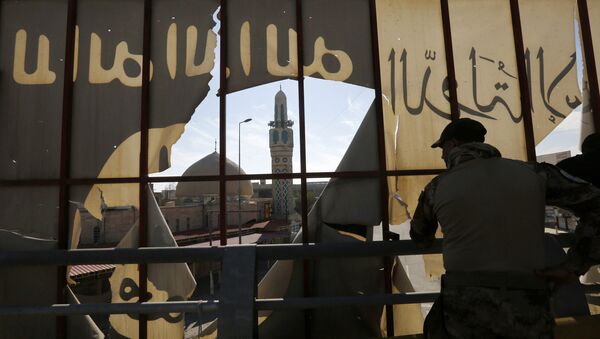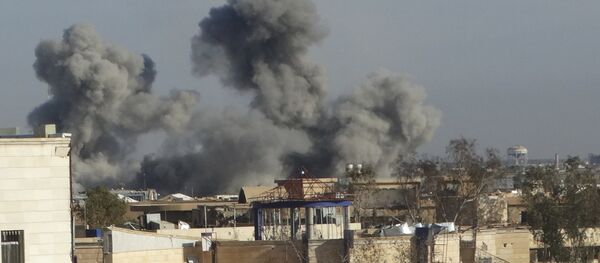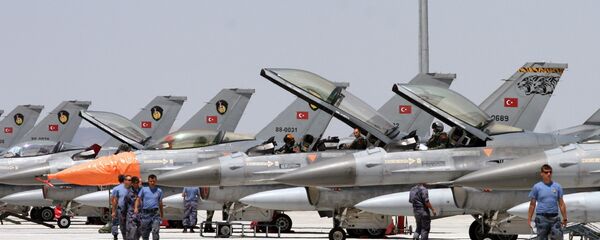The figure was provided to Action on Armed Violence (AOAV), a UK-based nonprofit organization, after the group submitted a Freedom of Information request to the Ministry of Defense. The data covers bombing information from September 2014 to January 2019.
Of the 4,315 Daesh militants targeted by RAF airstrikes, 4,013 enemy combatants were reported as killed, while the remaining 302 were reported as having survived with injuries.
Additionally, the report notes that the majority of the targeted individuals were located in Iraq, where 2,994 were killed and 235 survived with injuries. In Syria, 1,019 militants were declared dead and 67 injured.
As for what weaponry was used during these attacks, data provided to AVOV shows that 37 percent of the airstrikes were carried out by twin-engine Eurofighter Typhoons, 31 percent by multi-role combat Panavia Tornado fighters and 32 percent by remotely-piloted MQ-91 Reaper drones.
An MoD spokesperson told The Guardian that the collected data was the result of a "detailed battle damage assessment, which thoroughly examines the outcome of the strike against its target, be it Daesh fighters, weapons or bases."
But during all this time, how can it be that British airstrikes only killed one civilian, AOAV researchers asked themselves. A press release from the group notes that in its eight years of monitoring deaths and injuries associated with "explosive violence" in the region, it has found that more than 50,000 civilians have been killed or injured by airstrikes since 2011.
"With 1,000 targets hit by the RAF over Mosul and Raqqa, it is highly likely that the civilian harm from RAF airstrikes is under-recorded," the release pointed out. "In Mosul, 75 percent of strikes were on buildings. In Raqqa, this number was 63 percent. Furthermore, the vast majority of RAF airstrikes were in ‘dynamic' situations, meaning that they were responsive to events occurring on the ground, a reality that many accept raises the risks of the operation harming civilians."
Iain Overton, executive director of AOAV, wrote in a statement that the "RAF's claim of a ratio of one civilian casualty against 4,315 enemies must be a world record in modern conflict."
"Yet few conflict experts believe this to be true. To them, it is clear that far more needs to be done by the UK to improve transparency surrounding civilian casualties from airstrikes. Its coalition partner the US has committed to such, so why not the UK?" he added.
Overton isn't alone in his skepticism of the findings.
In response to AOAV's release, Donatella Rovera, Amnesty International's senior crisis response adviser, issued a statement, noting that the data "shows just how deeply in denial the MoD actually is over its role in the mass bombing of Mosul and Raqqa."
"Australia's military carried out far fewer strikes than the British, but, under pressure from Amnesty International and others, it has publicly admitted to killing civilians in Iraq. The US-led Coalition has admitted killing hundreds in Iraq and Syria. Why can't the British own up to their role in this?" she questioned.
And this isn't the first time that claims made by the ministry have been questioned by experts. In 2017, it stated that the RAF had killed more than 3,000 Daesh fighters in Syria and Iraq over the previous three years without harming any civilians. At the time, Robert Carter, a journalist and political commentator, told Radio Sputnik's Loud & Clear that such figures were statistically impossible, especially when the US Central Command admitted to killing at least 484 civilians in its airstrikes.
The journalist explained to hosts Brian Becker and John Kiriakou that one of the reason Western forces were unable to offer a solid count is because their information is mostly based on footage from satellites and drones, as well as intel from pilots who are dropping the missiles.
According to The Guardian, the US-led coalition against the Daesh terror group has carried out more than 33,000 airstrikes, which have resulted in the deaths of some 1,190 civilians and injuries to 249 others.




